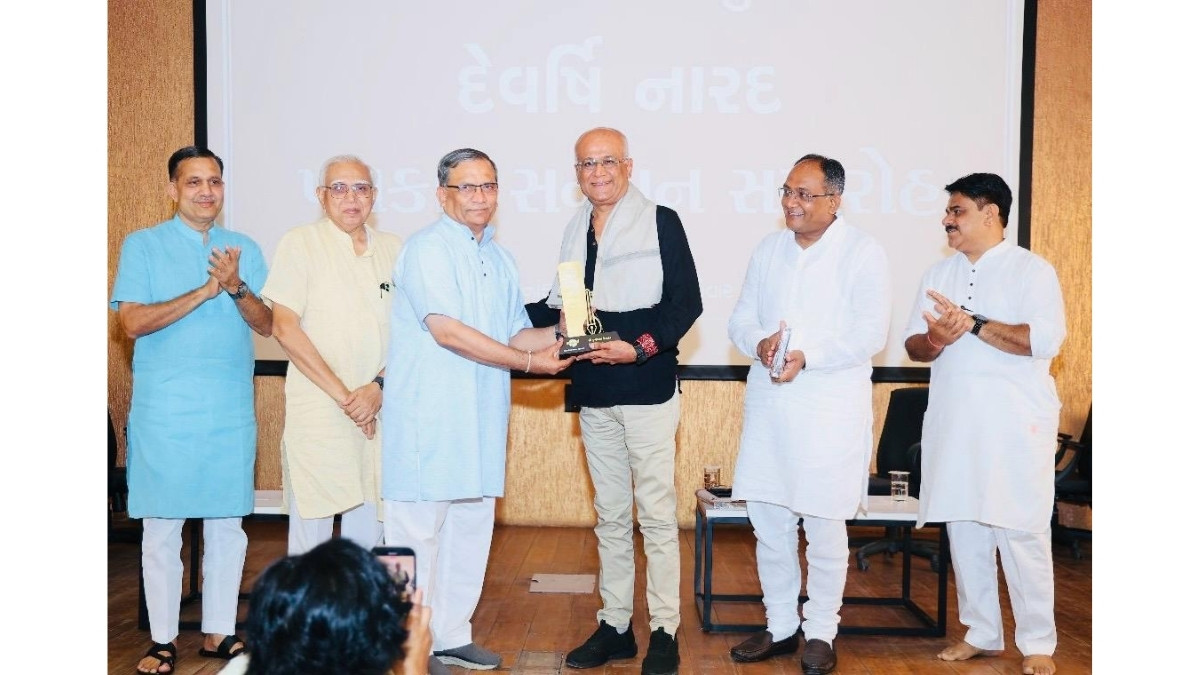Consumer tech and new products: Developer conference keynotes are changing

Every summer, tech giants unveil a new direction for their software products, apps, and upgrades bestowed upon tools for app developers. The timing is such that it leads to the final releases in the latter part of the year. For instance, Apple coincides the iOS release around the time the next iPhone line-up (usually mid-September) goes on sale. This season, there has been a very noticeable change in approach. Google, Microsoft and now Apple, are putting consumers back in the spotlight; not something that has been the case at developer-focused events in many years.
This change is two-pronged. First and foremost, common to all three developer conference keynotes, is the extensive focus on artificial intelligence (AI), especially for consumer-facing products. Google and Microsoft are more vocal about it, with Apple taking a slightly different tack. Second is the launch of new products, including computing devices, tablets, foldable smartphones, and indeed, Apple’s refreshing take on augmented reality (AR) headsets.
Google extended the Pixel line-up, with the company’s first foldable smartphone called Pixel Fold alongside an 11-inch tablet called the Pixel Tablet. The versatility aspect remains a highlight, particularly with the tablet morphing into a smart home display, when docked.
While Microsoft didn’t announce new hardware, including for the Surface PC line-up (focus being on Windows and AI), Apple did follow through extensively on the launches front. The new Mac Studio and Mac Pro desktops signal the end of Intel’s chapter for Macs, at least for now. The 15-inch MacBook Air is expected to kickstart a new category of ultraportable but large-screen laptops.
Yet, it is the Apple Vision Pro AR headset, which Apple describes as a “first spatial computer”, that is undoubtedly the highlight of the summer.
“Today marks the beginning of a new era for computing,” said Tim Cook, Apple’s chief executive officer (CEO). “Just as the Mac introduced us to personal computing, and iPhone introduced us to mobile computing, Apple Vision Pro introduces us to spatial computing,” he added.
There is still some way to go before this $3,499 (that is around ₹2,88,700) headset goes on sale, but in many ways, the experience and utility benchmark has been set. It removes the element of a screen from the headset, transforming the physical surroundings into a canvas. Eyes, fingers and hand gestures can be used for controls, and it can become a virtual computing device, a home theatre or a sports streaming hub too. Developers are already realigning attention to the visionOS, which powers the AR headset.
Generative AI, flavour of the season
At Google I/O 2023, Bard chatbot was made available to everyone. It joins OpenAI’s ChatGPT and Microsoft’s Bing chatbot, which also uses the GPT-4 foundations. Google kept Bard in a smaller test loop before making it widely available, as the tech giant attempts to tread carefully while handing over intelligent tools to more users.
“Our ability to make AI helpful for everyone relies on continuously advancing our foundation models,” said Sundar Pichai, CEO of Google and Alphabet, at the keynote. Bard uses Google’s newest large language model (LLM), Palm 2.
Google is also working on a new search tool to identify AI-generated images, experimental generative AI for Search and Duet AI tools for Workspace apps. Android didn’t have much of the spotlight, but the Messages app will get something called Magic Compose to generate replies based on the context of messages while attempting to replicate a user’s tone.
At Build 2023, Microsoft made an important move in the search space, with Bing becoming the default search engine for ChatGPT. This comes as OpenAI connects its chatbot to the internet. With ChatGPT evolving into smartphone apps too, starting with the iPhone, a much larger user demographic potentially awaits Bing.
“Now, ChatGPT answers can be grounded by search and web data and include citations so you can learn more—all directly from within chat,” says Yusuf Mehdi, corporate vice president of the Modern Life and Devices Group at Microsoft.
Much like Google’s tool to help users detect AI-generated images from photos that may have been captured by a camera somewhere in the world, Microsoft is planning to roll out cryptographic methods to mark and sign AI-generated content with metadata about its origin.
There was more AI play across Microsoft’s consumer-facing products too. An AI assistant called Copilot will arrive on Windows PCs in the coming months, with system-wide integration including summarising content from within apps, web pages, documents and email attachments. Cortana, part two?
Apple’s different take on reality
While Microsoft and Google are battling in similar spaces, Apple’s AI tools are primed more as foundations for apps and services available on the iPhone, iPad and Mac. At the Worldwide Developer Conference (WWDC), amid the first glimpses of iOS 17, it became clear that Apple doesn’t intend to slug it out with yet another AI chatbot. Or a text-to-image app.
Instead, iMessage will get the ability to transcribe audio messages while voicemail messages will be live transcribed allowing users to answer an important call. The use of the transformer language model is likely to introduce improvements to auto-correct when a user is typing text, along with new sentence autocorrect to focus on grammar and a new speech recognition model for improved voice typing accuracy.
“With iOS 17, we’ve made iPhone more personal and intuitive by deeply considering the features we all rely on every day,” says Craig Federighi, Apple’s senior vice president of Software Engineering.
Even the new StandBy information screen, when an iPhone is connected to a MagSafe wireless charger, will use machine learning for time and context-based suggestions. It’ll also remember specific screen preferences for each charger too.
What’s pushing the evolution?
A lot of the generative AI ecosystem developments are nudging tech giants to evolve. Adobe Firefly, which is now part of Photoshop too. Midjourney. Dall-E. Stable Diffusion. Freeway. Picsart. Nightcafe AI. Craiyon. Starry AI. Jasper. Photosonic. Just some names in the AI imaging space.
Two visual features for Android 14, called Cinematic Wallpaper and Generative AI Wallpaper, will use Google’s text-to-image diffusion model to generate an image Think of this as a melding of Midjourney or Stable Diffusion AI tools available on the web, but for a very specific functionality for Android devices.
Google Photos, an app that’s always led the way with editing capabilities, will add AI-powered complex editing options later this year. Magic Editor, as the suite is called, uses AI computational photography to enable tools including repositioning the subject within a frame and adding or removing elements in a photo.
Microsoft’s Bing Image Creator, which uses OpenAI’s Dall-E text-to-image system, is now integrated within the Bing AI chat too. “We know from research that the human brain processes visual information about 60,000 times faster than text, making visual tools a critical way people search, create and gain understanding,” said Microsoft’s Mehdi.
Developers: Sharing the space
Amid the change in approach for this year’s conferences, developers continue to play a crucial role for the tech giants. Once the camera flashes die down, the focus shifts back to the developers. Apple has illustrated the importance of focusing on app developers, with numbers for last year. They say the App Store ecosystem facilitated $1.1 trillion in developer billings and sales in 2022. That is a 29% year-on-year growth.
The importance isn’t lost on anyone at big tech.
Google is developing Codey, a coding bot to assist app developers. They’ll also get an AI tool to generate listings for the apps on the Play Store for Android devices. Android Studio is adding a conversational element, Hedgehog, which will help developers write code and fix bugs much sooner than they would have otherwise been detected. This is currently in the early test stage.
Microsoft is making more AI tools available to developers and hopes standardisation of plugin standards will make it easier for developers creating extensions for ChatGPT, to port them to Copilot too. Developers can now use one platform to build plugins that work across both consumer and business products, including ChatGPT, Bing, Dynamics 365 Copilot and Microsoft 365 Copilot.
“This is one of the most powerful things for your developers, for every developer to be able to write a plugin and have it reach billions of users across all of these surface areas,” said Satya Nadella, executive chairman and CEO of Microsoft.
At WWDC, there are updates for all of Apple’s technologies which developers plug into, including SwiftUI, new machine learning API (or application programming interface) including VisionKit for AR and natural language framework for conversations, Metal for porting games to the Mac and Passkeys which are now shareable with trusted contacts.

Atul Tiwari is a seasoned journalist at Mumbai Times, specializing in city news, culture, and human-interest stories. With a knack for uncovering compelling narratives, Atul brings Mumbai’s vibrant spirit to life through his writing.






